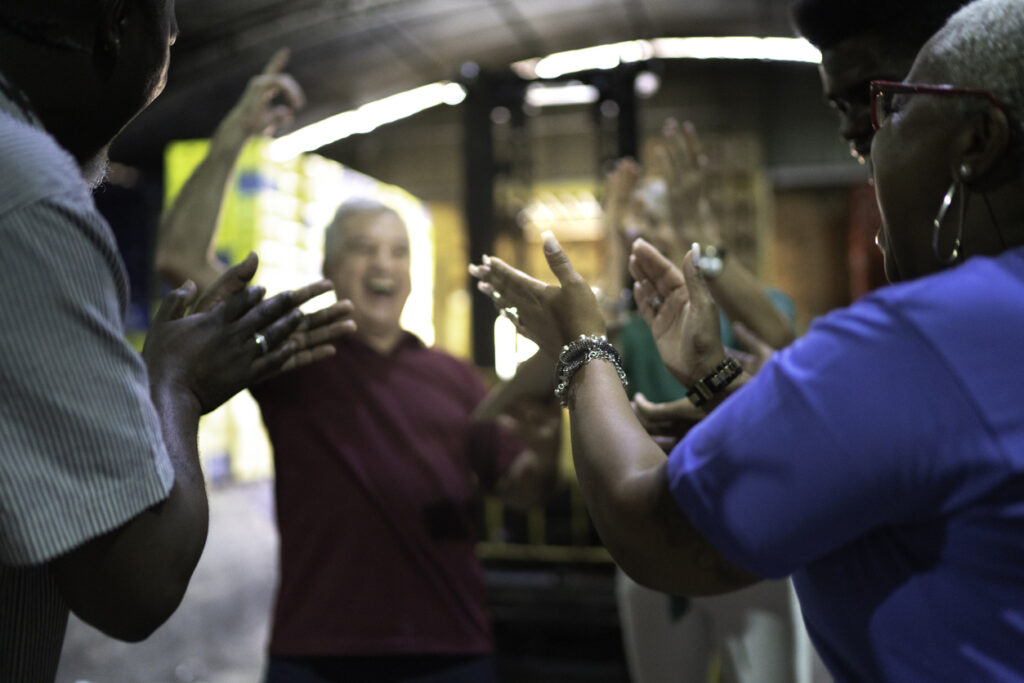Throughout the pandemic we’ve seen a change in why and how we recognise one another. Just look on social media, and you’ll see story after story of people cheering, clapping and even singing and dancing to send thanks. No trophies or money – just heartfelt and genuine appreciation.
Recognition should be used not only to drive performance, but also to drive wellbeing, acting as a way to help our employees be their best by feeling appreciated and valued.
In this article I’d like to pause a moment and explore what we’ve learned about recognition during the pandemic, and how to translate these learnings into recognising our workforce going forward.
1. Recognition does more than drive performance
In many organisations, recognition is used as a performance tool, rewarding and recognising those that have excelled through extraordinary performance. While this is still an important objective of recognition, during the pandemic we’ve also seen that in a world filled with uncertainty and challenges, recognition can be used as a way to give hope and strength to our workforce, lifting their spirits and helping them to become more resilient.
By recognising one another, we feel a sense of security, we know that we matter, and we feel better equipped to tackle the unknowns and the challenges that we face. For this reason, I believe that recognition should be used not only to drive performance, but also to drive wellbeing, acting as a way to help our employees be their best by feeling appreciated and valued.
An example of a company that has used recognition in this way throughout the pandemic is EDF Energy. It has been sending mailings to each and every employee during the lockdown period to make them feel appreciated, in three key stages:
- The first mailing was sent out at the beginning of lockdown, and included a tea bag, a cookie, and a note that said ‘we’re really grateful for everything you do, and think you’re one smart cookie’.
- Another mailing was sent in July, and included pick n mix sweets and a note that said ‘if we could choose our colleagues we’d definitely pick you. Thank you for your hard work’.
- Finally, employees received a ‘little box of appreciation’, containing recognition cookies and 50 recognition notes. The notes contained messages of inspiration, gratitude and motivation, and came with instructions to open when needed.

2. Recognition connects us to one another
Another aspect of wellbeing has to do with relationships. As social beings, we need to connect with one another. Without this, research has shown an impact on our physical and emotional health, leading to depression, anxiety and increased stress.
In the past, recognition has been seen as a way to showcase what ‘good’ looks like, putting the spotlight on actions and behaviours that the company wants replicated to drive performance. Whilst this is still important, we’ve also seen how connecting employees through ‘shared recognition’ helps them feel less isolated, inviting them to join in on recognition moments. Going forward, we need to find ways to use recognition in this way, making the spotlight shine brighter and in more directions, helping to build more frequent and stronger connections.
An example of a company that has used recognition in this way during the pandemic is Dunelm, which created a new set of eCards that became part of its social recognition platform. These new eCards had a home theme, since colleagues were spending more time at home, and focused on appreciating one another, being part of a team, looking out for each other, and doing well despite the circumstances. They’ve been a huge success, with four times more of these eCards being sent than in the past, showing the importance of recognising and connecting with one another during these challenging times.

3. It’s the little things that matter
In a world that’s changing by the minute, when a day feels like a week or a month, companies have found that you can no longer wait for the big recognition moments – those monthly, quarterly or annual programmes. Although they may still have a place in your recognition strategy, you also need to design recognition programmes for ‘in the moment’ achievements, recognising those small wins that are helping your people and business survive in these challenging times and beyond.
Going forward, every recognition programme needs to have some element of ‘in the moment’ recognition, using it as a way to let your employees know that every small impact they make contributes and makes a difference, and that you appreciate them when it happens, and not a month, quarter or year later!
4. Recognition isn’t about the money
Last, but certainly not least, we’ve learned that we don’t need to spend a lot of money to recognise and make our employees feel appreciated. With businesses struggling during the pandemic, companies have been forced to get creative with how they recognise their employees, and they’ve done a brilliant job.
Companies have gone back to the phrase ‘it’s the thought that counts’, finding no or low cost ways to recognise their employees, focussing more on the ‘why’, ‘how’ and ‘when’, and less on the ‘what’. So whether it’s eCards or shout outs at the end of virtual team meetings, which cost nothing, we all need to re-think and look again at what we do to recognise our workforce.
One company that has done this during the pandemic is Welcome Break. To thank employees for their contributions during lockdown, it created its own version of the UK’s Thursday night ‘clap for the NHS’ celebration. It created a short ‘clap for the team’ video that included each member of the leadership team saying thank you as they clapped, with the overall message being ‘tonight we clap for you’.
[cm_form form_id=’cm_65a14c3f5da64′]
So as you look at your recognition strategy and programmes for the future, I encourage you to consider what we’ve learned about recognition throughout the pandemic. Weave these into why and how you recognise, and don’t be tempted to go back to the ‘old ways’ that will be obsolete as we move forward in this new way of working.
Interested in this topic? Read Why employee rewards and recognition are needed now more than ever.










